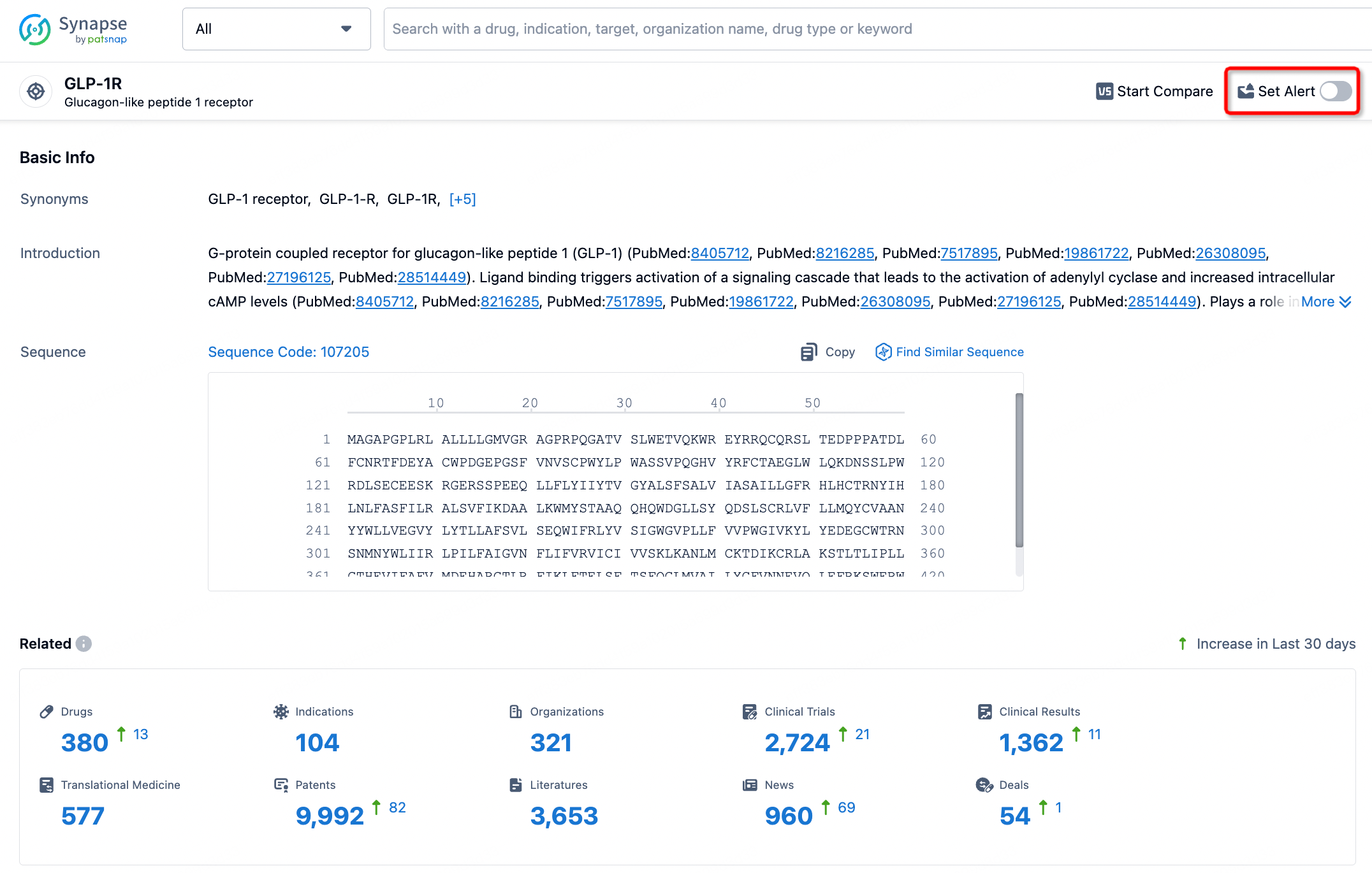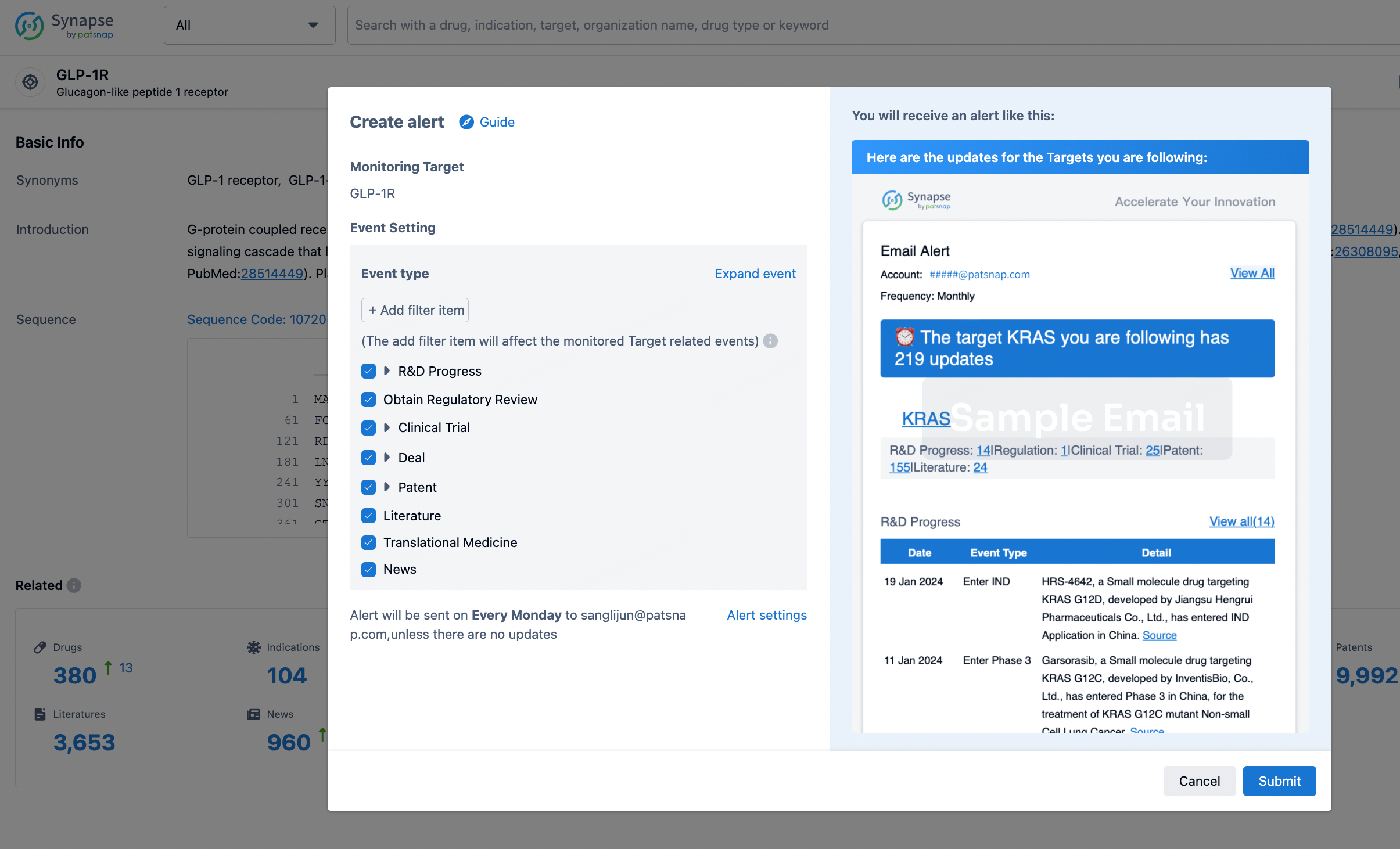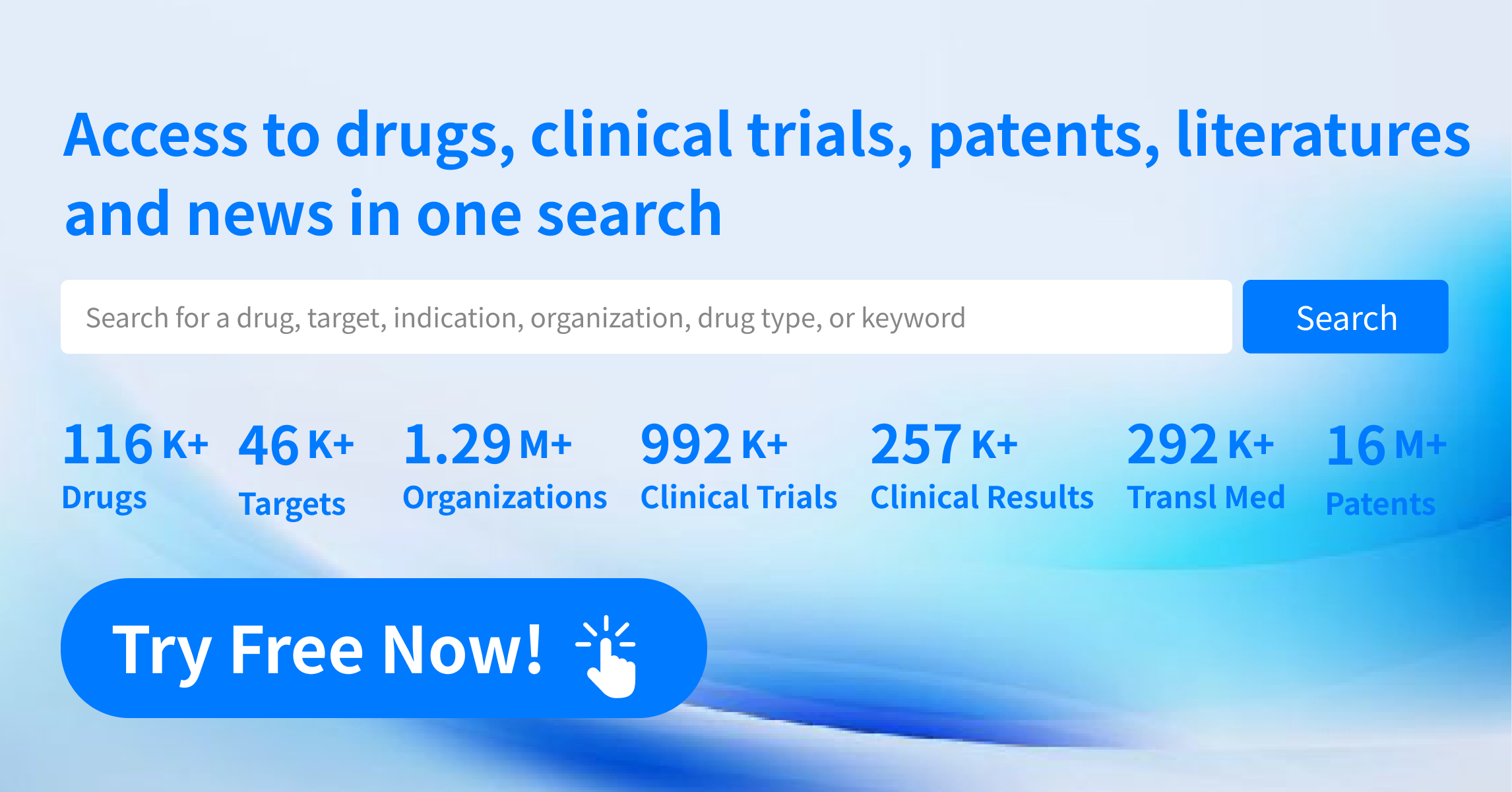Request Demo
What are 5-HT1A receptor partial agonists and how do they work?
21 June 2024
The 5-HT1A receptor is a subtype of the serotonin receptor, playing a crucial role in the regulation of mood, anxiety, and other psychological and physiological processes. 5-HT1A receptor partial agonists are a class of compounds that bind to these receptors and activate them, albeit not to the full extent that serotonin itself would. These compounds have garnered significant attention in the fields of neuroscience and psychopharmacology due to their potential therapeutic implications.
To understand the mechanism of action of 5-HT1A receptor partial agonists, it's essential to grasp how serotonin receptors function. The 5-HT1A receptor is a G-protein coupled receptor (GPCR) located both in the brain and in peripheral tissues. When serotonin binds to the 5-HT1A receptor, it triggers a cascade of intracellular events that result in various physiological responses. A partial agonist, in this context, binds to the receptor and activates it but produces a submaximal response compared to the full agonist, serotonin.
This partial activation can be beneficial because it offers a modulated response, reducing the risk of overstimulation which might occur with full agonists. By providing a gentler activation, partial agonists are less likely to cause severe side effects, making them an attractive option for therapeutic use. The exact mechanism involves the partial agonist binding to the receptor and inducing a conformational change that initiates signal transduction pathways, such as the inhibition of adenylate cyclase or the opening of potassium channels, ultimately leading to altered neuronal excitability and neurotransmitter release.
5-HT1A receptor partial agonists are primarily used in the treatment of various psychiatric disorders, including anxiety and depression. These conditions are often associated with dysregulated serotonin signaling. By modulating the activity of the 5-HT1A receptors, partial agonists can help to restore balance in the serotonin system, alleviating symptoms of these disorders. For instance, buspirone is a well-known 5-HT1A receptor partial agonist that is commonly prescribed for generalized anxiety disorder. It has an anxiolytic effect without the sedative properties associated with other types of anxiety medications like benzodiazepines.
Beyond anxiety and depression, there is ongoing research into the use of 5-HT1A receptor partial agonists for other conditions. For example, these compounds have shown promise in the treatment of schizophrenia. In this context, they may help to improve cognitive deficits and negative symptoms, which are often resistant to treatment with conventional antipsychotics. Moreover, there is emerging evidence that they could be beneficial in the management of certain types of chronic pain, as well as in the treatment of neurodegenerative diseases like Alzheimer's disease, where they might help to mitigate some of the cognitive impairments and neuropsychiatric symptoms.
The potential applications of 5-HT1A receptor partial agonists are not limited to the central nervous system. There is also interest in their use for cardiovascular conditions, due to their ability to modulate autonomic functions. Additionally, these compounds may have a role in the treatment of certain gastrointestinal disorders, given the presence of 5-HT1A receptors in the gut.
In conclusion, 5-HT1A receptor partial agonists represent a promising area of pharmacotherapy with a broad range of potential applications. Their ability to modulate the serotonin system in a controlled manner makes them valuable for the treatment of psychiatric disorders, and ongoing research continues to uncover new therapeutic possibilities. As our understanding of the 5-HT1A receptor and its role in various physiological processes expands, so too will the potential for these compounds to improve patient outcomes across a variety of conditions.
To understand the mechanism of action of 5-HT1A receptor partial agonists, it's essential to grasp how serotonin receptors function. The 5-HT1A receptor is a G-protein coupled receptor (GPCR) located both in the brain and in peripheral tissues. When serotonin binds to the 5-HT1A receptor, it triggers a cascade of intracellular events that result in various physiological responses. A partial agonist, in this context, binds to the receptor and activates it but produces a submaximal response compared to the full agonist, serotonin.
This partial activation can be beneficial because it offers a modulated response, reducing the risk of overstimulation which might occur with full agonists. By providing a gentler activation, partial agonists are less likely to cause severe side effects, making them an attractive option for therapeutic use. The exact mechanism involves the partial agonist binding to the receptor and inducing a conformational change that initiates signal transduction pathways, such as the inhibition of adenylate cyclase or the opening of potassium channels, ultimately leading to altered neuronal excitability and neurotransmitter release.
5-HT1A receptor partial agonists are primarily used in the treatment of various psychiatric disorders, including anxiety and depression. These conditions are often associated with dysregulated serotonin signaling. By modulating the activity of the 5-HT1A receptors, partial agonists can help to restore balance in the serotonin system, alleviating symptoms of these disorders. For instance, buspirone is a well-known 5-HT1A receptor partial agonist that is commonly prescribed for generalized anxiety disorder. It has an anxiolytic effect without the sedative properties associated with other types of anxiety medications like benzodiazepines.
Beyond anxiety and depression, there is ongoing research into the use of 5-HT1A receptor partial agonists for other conditions. For example, these compounds have shown promise in the treatment of schizophrenia. In this context, they may help to improve cognitive deficits and negative symptoms, which are often resistant to treatment with conventional antipsychotics. Moreover, there is emerging evidence that they could be beneficial in the management of certain types of chronic pain, as well as in the treatment of neurodegenerative diseases like Alzheimer's disease, where they might help to mitigate some of the cognitive impairments and neuropsychiatric symptoms.
The potential applications of 5-HT1A receptor partial agonists are not limited to the central nervous system. There is also interest in their use for cardiovascular conditions, due to their ability to modulate autonomic functions. Additionally, these compounds may have a role in the treatment of certain gastrointestinal disorders, given the presence of 5-HT1A receptors in the gut.
In conclusion, 5-HT1A receptor partial agonists represent a promising area of pharmacotherapy with a broad range of potential applications. Their ability to modulate the serotonin system in a controlled manner makes them valuable for the treatment of psychiatric disorders, and ongoing research continues to uncover new therapeutic possibilities. As our understanding of the 5-HT1A receptor and its role in various physiological processes expands, so too will the potential for these compounds to improve patient outcomes across a variety of conditions.
How to obtain the latest development progress of all targets?
In the Synapse database, you can stay updated on the latest research and development advances of all targets. This service is accessible anytime and anywhere, with updates available daily or weekly. Use the "Set Alert" function to stay informed. Click on the image below to embark on a brand new journey of drug discovery!
AI Agents Built for Biopharma Breakthroughs
Accelerate discovery. Empower decisions. Transform outcomes.
Get started for free today!
Accelerate Strategic R&D decision making with Synapse, PatSnap’s AI-powered Connected Innovation Intelligence Platform Built for Life Sciences Professionals.
Start your data trial now!
Synapse data is also accessible to external entities via APIs or data packages. Empower better decisions with the latest in pharmaceutical intelligence.


